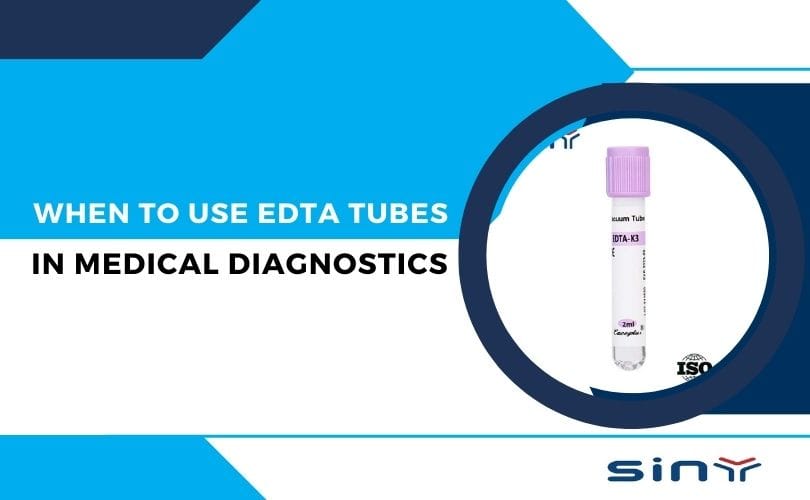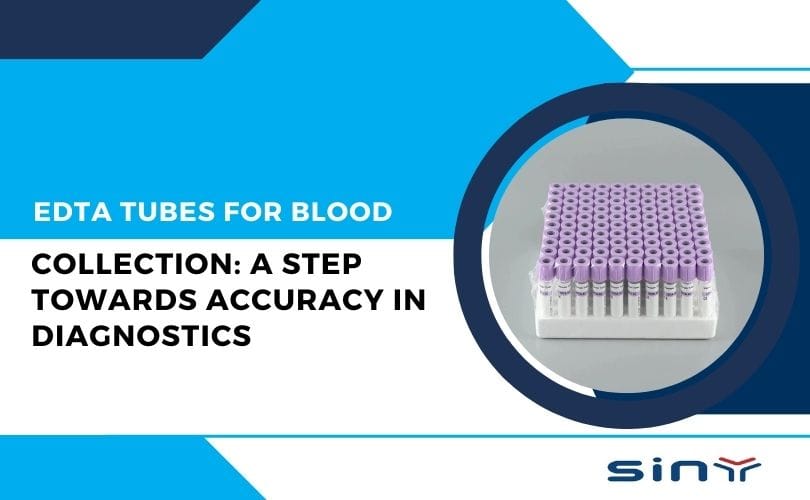Ethylenediaminetetraacetic acid EDTA tubes are essential in clinical laboratories for blood collection and preservation. Proper handling and storage of these tubes are crucial to maintain sample integrity and ensure accurate test results. This blog will explore the best practices for handling and storing EDTA tubes, emphasizing their importance in laboratory settings.
Why Proper Handling and Storage of EDTA Tubes Matter
When it comes to laboratory work, EDTA tubes are indispensable. Used primarily for blood sample collection and hematological testing, these tubes ensure that blood samples remain stable by preventing clotting. But here’s the thing—how you handle and store these tubes can make or break the accuracy of your test results. Poor practices can lead to hemolysis, contamination, or even invalid data, which no lab professional wants to deal with.

In this blog, we’ll delve into the best practices for handling and storing EDTA tubes, ensuring you’re equipped with the knowledge to maintain sample integrity. Whether you’re a seasoned lab technician or new to the medical field, this guide will walk you through everything you need to know.
What Are EDTA Tubes and Why Are They Important?
EDTA tubes are blood collection tubes containing ethylenediaminetetraacetic acid (EDTA), a potent anticoagulant. The EDTA binds calcium ions in the blood, effectively preventing clotting and maintaining the blood’s natural state. This makes these tubes ideal for a wide range of applications, including:
- Hematology tests, such as complete blood counts (CBCs).
- Molecular diagnostics, like DNA and RNA testing.
- Blood banking, to prepare and store blood for transfusions.
Want to learn more about EDTA tubes and their functions? Check out this detailed guide here: What are EDTA Tubes?.
Practices for Handling EDTA Tubes
1. Check the Expiry Date Before Use
Always inspect the expiry date printed on the tube packaging. Expired EDTA tubes might not function correctly, leading to coagulation or sample contamination. Using expired tubes could compromise the validity of your test results.
2. Maintain Sterility at All Times
Keep the EDTA tubes sealed until they’re ready for use. Once opened, handle them with gloves to minimize the risk of contamination. Avoid touching the inner rim of the tube or the cap.
3. Use Proper Collection Techniques
To ensure accurate results:
- Use a clean venipuncture technique to collect the sample.
- Mix the blood sample gently but thoroughly with the EDTA by inverting the tube 8–10 times. Avoid shaking it vigorously as this can lead to hemolysis.
For more on the proper technique, visit Sinymedical’s Blood Collection Tubes Guide.
4. Label the Tubes Correctly
Each EDTA tube should be clearly labeled with the patient’s details, collection time, and date. Mislabeling can lead to mix-ups and incorrect diagnoses.
Storage Conditions for EDTA Tubes
1. Store at Recommended Temperatures
EDTA tubes should be stored at temperatures between 2°C and 25°C (35.6°F to 77°F). Storing them outside this range may compromise the anticoagulant’s effectiveness.
2. Avoid Direct Sunlight and Extreme Conditions
Exposure to direct sunlight or extreme heat can degrade the EDTA compound. Always keep the tubes in a dark, temperature-controlled environment.
3. Do Not Freeze Blood Samples in EDTA Tubes
Freezing whole blood in EDTA tubes can rupture red blood cells, leading to hemolysis. Instead, centrifuge the sample (if applicable) and freeze only the plasma or serum.
4. Use Racks for Organization
To prevent accidental tipping or spills, store EDTA tubes upright in tube racks. This also ensures proper mixing of the blood and EDTA.
Common Mistakes to Avoid When Handling EDTA Tubes
1. Overfilling or Underfilling the Tubes
EDTA tubes have precise volume markings for a reason. Overfilling can dilute the anticoagulant, while underfilling might lead to clots forming in the sample.
2. Delayed Mixing After Collection
Failing to mix the blood with the EDTA immediately after collection can cause microclots to form, which will affect the accuracy of hematology tests.
3. Improper Transport
Transporting EDTA tubes without proper insulation or protection can expose them to vibrations and temperature fluctuations, both of which can compromise sample quality.
For transport solutions, Siny Medical offers a variety of products designed to maintain sample integrity.
The Role of Quality in EDTA Tubes
Not all EDTA tubes are created equal. Inferior-quality tubes might leak, crack under pressure, or fail to maintain sample stability. That’s why it’s important to source your EDTA tubes from reputable manufacturers like EDTATube.com.
Their products are designed to meet stringent quality standards, ensuring the safety and reliability of your samples. Learn more about their offerings here: Explore EDTA Tube Products.
Why Proper Handling and Storage Impacts Patient Care
The accuracy of lab results directly affects patient diagnosis and treatment plans. Mishandled EDTA tubes can lead to skewed results, causing delays in treatment or even misdiagnoses. By following proper protocols, you contribute to better patient outcomes and maintain the integrity of your laboratory.
For additional guidance on maintaining high standards in laboratory practices, visit the EDTA Tube About Us Page.
Proper handling and storage of EDTA tubes aren’t just best practices—they’re critical to ensuring accurate lab results and better patient care. From maintaining sterility to storing them at the right temperature, every step plays a role in safeguarding sample integrity.
Ready to upgrade your lab’s efficiency? Explore high-quality EDTA tubes and more at EDTATube.com or get in touch with their team at Contact Us. Remember, precision starts with the tools you use!
FAQs EDTA Tubes
Q1. Can EDTA tubes be reused?
No, EDTA tubes are designed for single use only to ensure sterility and accuracy.
Q2. What happens if I overmix the sample in an EDTA tube?
Overmixing can cause hemolysis, damaging red blood cells and compromising test results.
Q3. How long can blood samples remain stable in EDTA tubes?
Blood samples in EDTA tubes are stable for up to 24 hours at room temperature. For extended storage, refrigeration is recommended.
Q4. Can EDTA tubes be used for serum collection?
No, EDTA tubes are specifically designed for whole blood or plasma. For serum collection, use serum separator tubes (SSTs).
Q5. Where can I buy high-quality EDTA tubes?
Visit EDTATube.com for a wide selection of reliable EDTA tubes.






